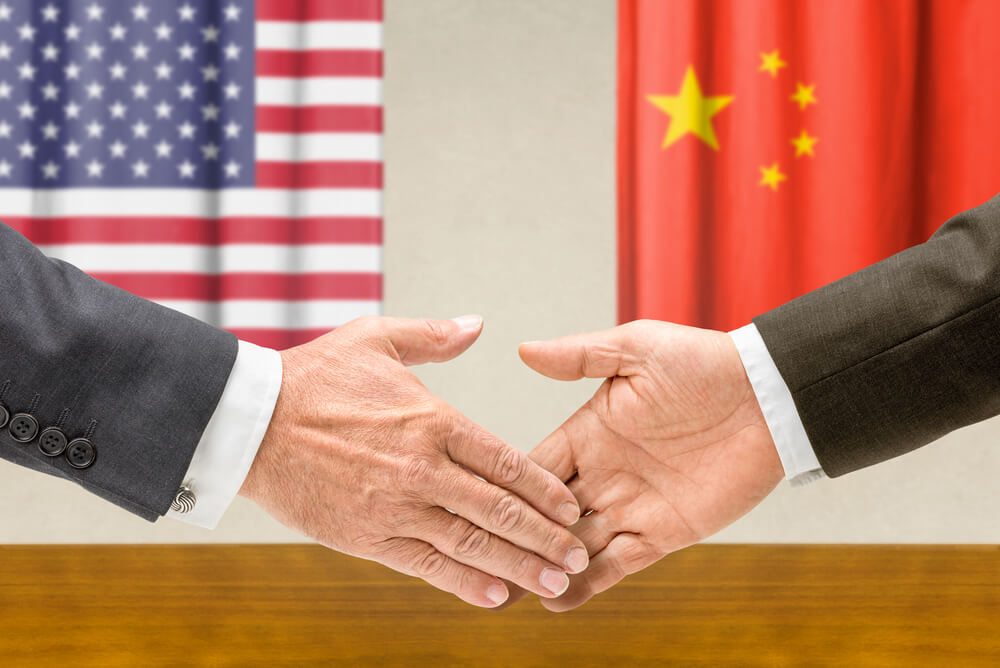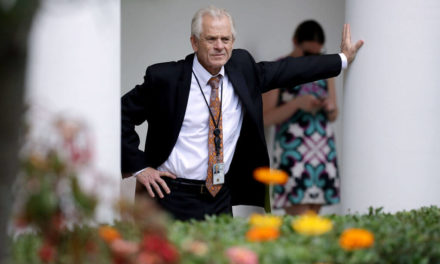The Wall Street Journal is reporting that the United States and China are pursuing a deal to defuse trade tensions and boost markets, in which the Trump administration will hold off on further tariffs through spring as the two sides work on a deal.
The talks include “big changes in Chinese economic policy,” according to U.S. and Chinese officials.
Discussions of have been ongoing for weeks via phone, and are coming to a head as presidents Donald Trump of the U.S. and Xi Jinping of China, as well as top officials on both sides, are scheduled to meet for dinner Saturday at the G20 summit in Argentina.
Per the WSJ:
New talks would focus on what both sides are calling trade “architecture,” a broad term that could encompass many issues the U.S. has wanted Beijing to address, including intellectual property protection, coerced technology transfer, subsidies to state-owned enterprises, and even non-trade issues such as cyber-espionage.
It isn’t clear what specifics the U.S. is asking for—or what Beijing is willing to entertain. One offer, according to Chinese officials: in return for the suspension of U.S. tariffs, Beijing would agree to lift restrictions on China’s purchases of U.S. farm and energy products.
That kind of deal would be similar to other agreements the U.S. has made with the EU and Japan in which the U.S. agrees hold off on levying additional tariffs while the two sides negotiate.
With Japan, for example, Tokyo agreed that any deal would increase automobile production and jobs in the U.S, while Washington agreed not to press Tokyo for more concessions on agriculture than Japan had previously allowed free-trade partners.
Trump said the two sides are “very close” before heading off to Argentina for the G20 summit, but said: “I don’t know if we want to do it. I’m open to making a deal, but frankly, I like the deal we have now.”
Mr. Trump has said regularly that a deal is possible, but on Monday he told The Wall Street Journal that it was “highly unlikely” that the U.S. would postpone a rise in existing tariffs on $200 billion in Chinese goods to 25% on Jan. 1. He also threatened additional tariffs on the rest of China’s $505 billion in imports to the U.S. Beijing’s top goal is to get the U.S. to hold off on such tariffs.
Trump is facing pressure from many fronts to get a trade deal done. Advisers have been warning Trump that additional tariffs could tank the U.S. economy next year, also tanking the stock market — which would have a big impact on his reelection chances in 2020.
On the hand, a deal that backs away from tariffs in exchange for Chinese pledges to negotiate will subject Trump to criticism from the right.
But he wants to protect the economic policies that helped transform China, in 40 years, into the world’s second largest economy from an economic backwater. They include subsidies for Chinese state-owned firms and pressure on foreign companies to turn over advanced technology to Chinese partners.
China is already planning a follow-up meeting to the G20 dinner, with a trade delegation planning to travel to Washington in mid-December.
U.S. moderates are examining what kind of concessions they need from Beijing to get a deal that Trump would agree to.
Then there are the hardliners like National Security Adviser John Bolton and trade adviser Peter Navarro. Stocks sunk Thursday morning after news broke that Navarro will now attend the G20 dinner. During internal battles over trade, Trump has routinely sided with the hardliners, the WSJ reports.
Keep scrolling down to read the latest on the trade war with China on Money & Markets.




